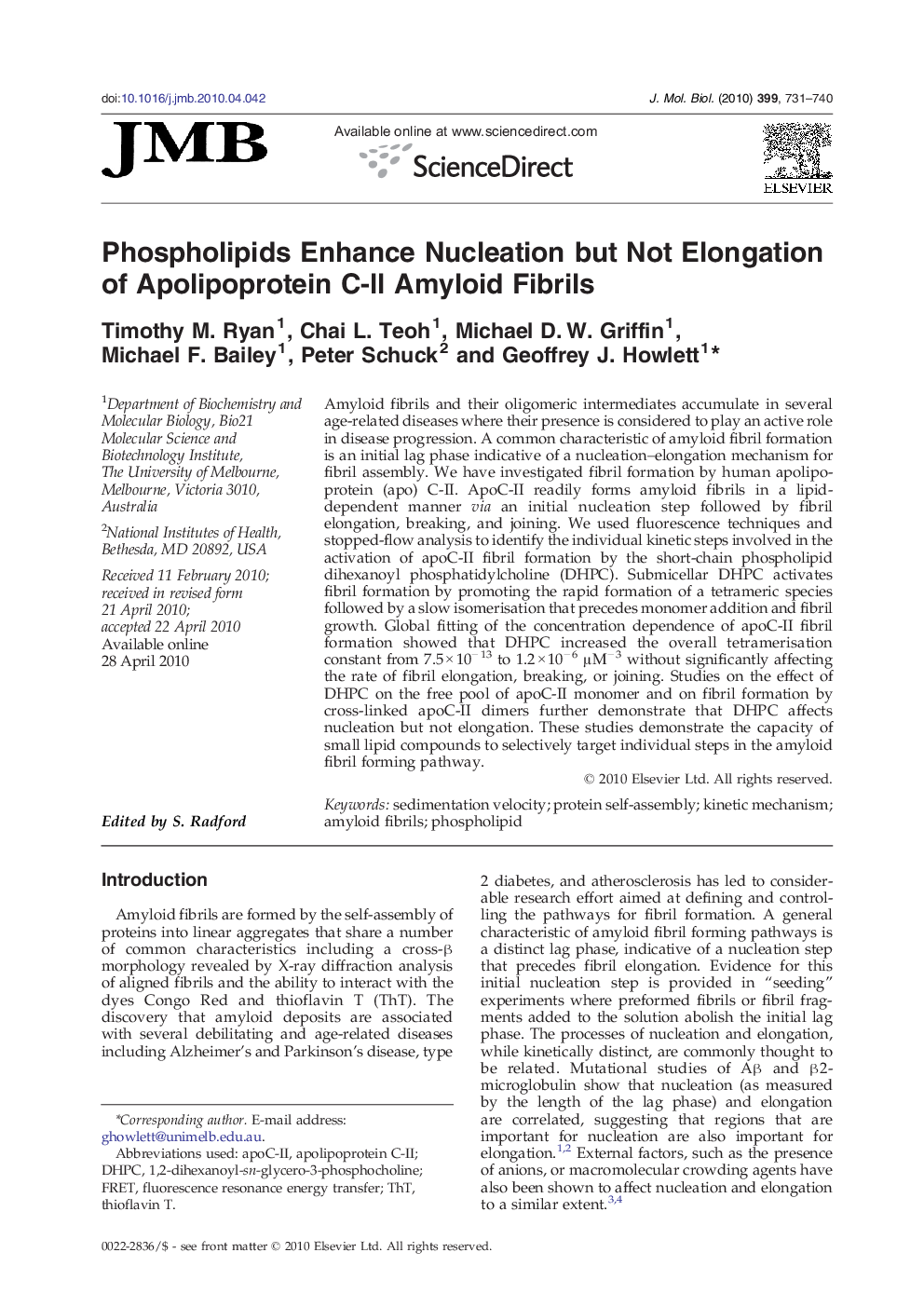| Article ID | Journal | Published Year | Pages | File Type |
|---|---|---|---|---|
| 2186140 | Journal of Molecular Biology | 2010 | 10 Pages |
Amyloid fibrils and their oligomeric intermediates accumulate in several age-related diseases where their presence is considered to play an active role in disease progression. A common characteristic of amyloid fibril formation is an initial lag phase indicative of a nucleation–elongation mechanism for fibril assembly. We have investigated fibril formation by human apolipoprotein (apo) C-II. ApoC-II readily forms amyloid fibrils in a lipid-dependent manner via an initial nucleation step followed by fibril elongation, breaking, and joining. We used fluorescence techniques and stopped-flow analysis to identify the individual kinetic steps involved in the activation of apoC-II fibril formation by the short-chain phospholipid dihexanoyl phosphatidylcholine (DHPC). Submicellar DHPC activates fibril formation by promoting the rapid formation of a tetrameric species followed by a slow isomerisation that precedes monomer addition and fibril growth. Global fitting of the concentration dependence of apoC-II fibril formation showed that DHPC increased the overall tetramerisation constant from 7.5 × 10− 13 to 1.2 × 10− 6 μM− 3 without significantly affecting the rate of fibril elongation, breaking, or joining. Studies on the effect of DHPC on the free pool of apoC-II monomer and on fibril formation by cross-linked apoC-II dimers further demonstrate that DHPC affects nucleation but not elongation. These studies demonstrate the capacity of small lipid compounds to selectively target individual steps in the amyloid fibril forming pathway.
